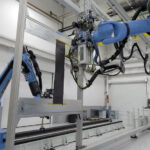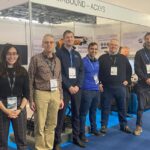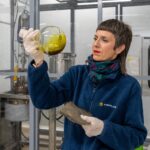The Utah Advanced Materials and Manufacturing Initiative (UAMMI) and ElectraFly, an aviation company building personal flying vehicles, are teaming up to create 3D printed carbon fiber aircraft parts for the Urban Air Mobility (UAM) market.
“The market for Urban Air Mobility aircraft, which is on-demand urban transportation aircraft carrying from 1 to 8 passengers, is forecasted to be 430,000 vehicles over the next twenty years,” said Dr. Tulinda Larsen, Executive Director for UAMMI. “Using lightweight 3D printed advanced materials will be essential to meet the manufacturing requirements for this emerging industry,” she added.
ElectraFly is an aviation company designing and building single person, hybrid-electric Vertical Take-Off and Landing (VTOL) multicopters. This company is headquartered near Salt Lake City, Utah. About the collaboration with UAMMI, John Manning, co-founder of ElectraFly, said: “There is an undeniable movement happening in air transportation, but there are problems in efficiency. Teaming with UAMMI to transition our complex metal parts to lightweight 3D printed composite parts will support our innovations and help expand our operations here in Utah”.
The experience of UAMMI helps produce UAM vehicles
Under a contract from America Makes, for the last two years UAMMI has been using the Impossible Objects Composite Based Additive Manufacturing (CBAM) 3D printer to fabricate legacy aircraft parts for the Air Force. The CBAM technology is a novel additive process that uses carbon fiber sheets and thermoplastic materials to produce Carbon Fiber Reinforced Plastic (CFRP) components under heat and pressure in a similar manner to compression molding. The resulting CFRP parts are half the weight of aluminum but have comparable strength to weight ratios.

Building on the success of the Air Force project, UAMMI will now use the CBAM technology to begin printing parts for ElectraFly. “The CBAM printer is ideal for manufacturing parts for Urban Air Mobility aircraft because the technology of layering composites ensures strong, lightweight composite parts and the digital agility of building different part families on-demand,” said Jeff DeGrange, Chief Commercial Officer, Impossible Objects. “We are thrilled that UAMMI and ElectraFly wil be using this technology to manufacture parts for their new innovative UAM vehicle and are excited to see the results,” he added.
The UAMMI and ElectraFly team will begin working on the project immediately with their first objective to replace the vehicles metal gears with composite fabricated parts. Additional parts will be added to the program and manufactured over time.
Source: UAMMI












